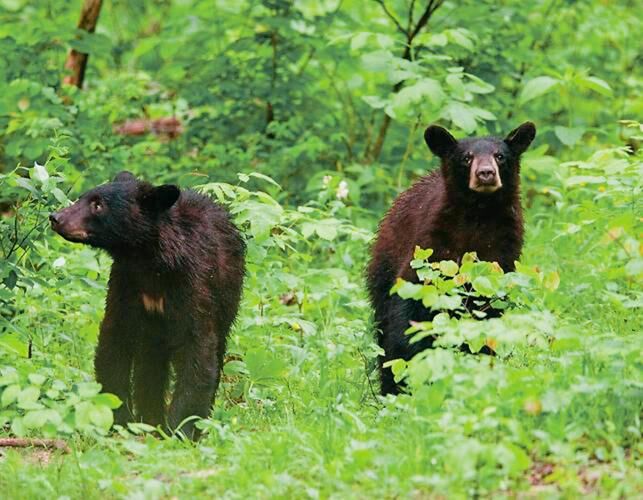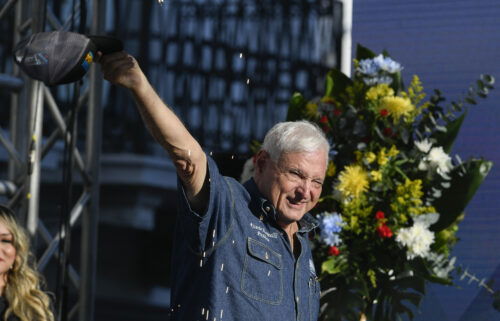Conservation measures are bringing black bears back to Missouri

By Columbia Missourian via My Courier-Tribune
In the heavily forested Ozark plateau south of Columbia, black bears are increasingly making Missouri their home.
After being nearly eradicated from the state in the 1930s, the bear population is finally bouncing back, thanks to conservation efforts in recent decades.
Today, Missouri has about about 900 bears, a significant increase from the few hundred counted in the initial population estimate 10 years ago.
Most remain below the Missouri River in the southern part of the state, where wooded space and suitable food are more abundant. But because they are naturally curious animals, some have wandered farther north around St. Louis and into Boone County.
Black bear sightings have been reported to the Missouri Conservation Department north of Blue Ridge Road and south of Clark Lane. The last one in Boone County was reported in 2019, although state biologists say the possibility of unconfirmed sightings cannot be ruled out.
“Over time, I definitely expect us to see more regular activity north of the river, but as far as higher bear densities, I don’t think we’ll see bear densities as high in the northern half of the state as we would down in the south central parts of the state,” said Nate Bowersock, Missouri’s black bear and furbearer biologist.
Although native to Missouri, black bears were nearly hunted to extinction for their meat in the 1800s once settlers arrived, as there were no conservation efforts in place to protect them. But once the species dwindled, officials in Arkansas decided to reintroduce them in their state during the mid-20th century using bears from Minnesota and Canada that eventually made their way into Missouri.
“Then, the remnant bears we did have in Missouri mixed with those Arkansas restoration bears, and that led to our population growing into what it is now today,” Bowersock said.
Southern Missouri has larger amounts of connected habitat, which means black bears will likely spend most of their time in that part of the state, said Jennifer Freund, a specimens collection curator and MU instructor on population dynamics.
“Those connected spaces, the access to water, the different types of habitats that the bears were able to adapt to because they have so many different types of food that they can eat, all of those things have kind of contributed to the movement and success of that animal in southern Missouri in particular,” she said.
To study the changes in their populations, the Missouri Department of Conservation created the Missouri Black Bear Project in 2010, which uses GPS collars to track female bears to their dens, count their cubs and see how many survive to adulthood.
The project also conducts hair snare studies, which use thin, harmless barbed wire strung between trees to create a small enclosure in the woods to catch pieces of hair as the animals walk past.
“We can go back and take that hair and do DNA analysis on it to ID unique individuals, and then through some complex modeling, we can actually estimate the bear population,” Bowersock said.
As the bear population expands, humans and bears will likely come into contact with each other more often, which could present a new collection of challenges.
A 2020 study on bear recolonization by two researchers in New York and Laura Conlee, the former state black bear biologist, found that “private landowners will play a key role in the maintenance of high quality habitat and linkages for black bears in Missouri.” Targeted land management will be needed for successful conservation and avoiding human-bear conflict, according to the study.
Due to their curiosity and continual search for food, bears occasionally get into food sources like campsites, pet food and garbage, putting the animals in close proximity to their human neighbors.
When humans and animals are this close to each other, it can create a nuisance, but it can also cause illness to spread, Freund said.
“When you bring two different species together, you increase the probability of even diseases spreading,” she said. “Similarly, we can spread disease to wildlife; we often think of how it impacts us, but they can also get diseases from us.”
As these new challenges arise, understanding bear behavior can help keep both bears and humans safe, Bowersock said. He hopes to work toward understanding with the Missouri Black Bear Project, but he added that there is still much to learn about the largely solitary, elusive creatures.
“As we see them continuing to grow in the state, you know, it just spurs more and more questions about our bears,” he said.
Freund emphasized the importance of bridging conversation between science and mutual protection of humans and animals.
“We kind of failed to realize that the animals are trying to live within a human changed environment,” she said, “which now puts some of that stewardship of managing populations and habitat into the human realm a little bit more.”




